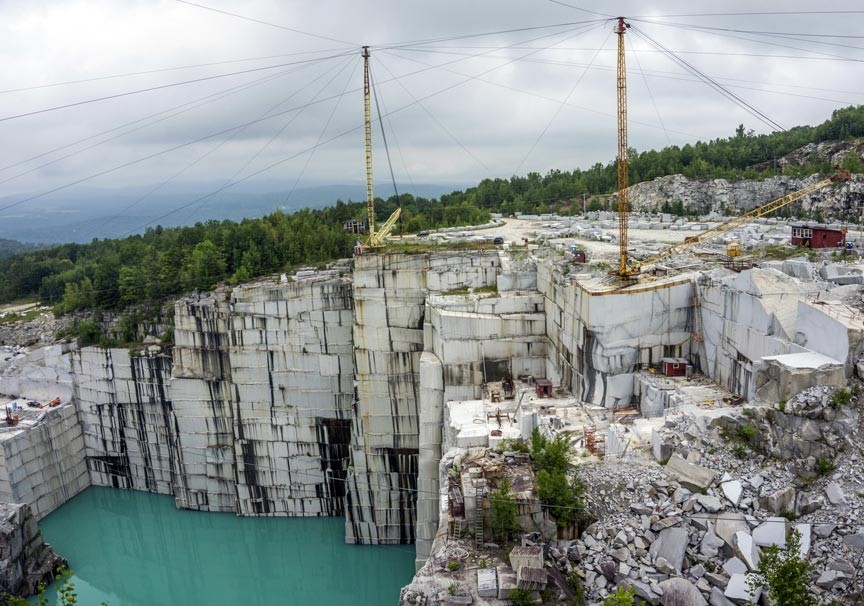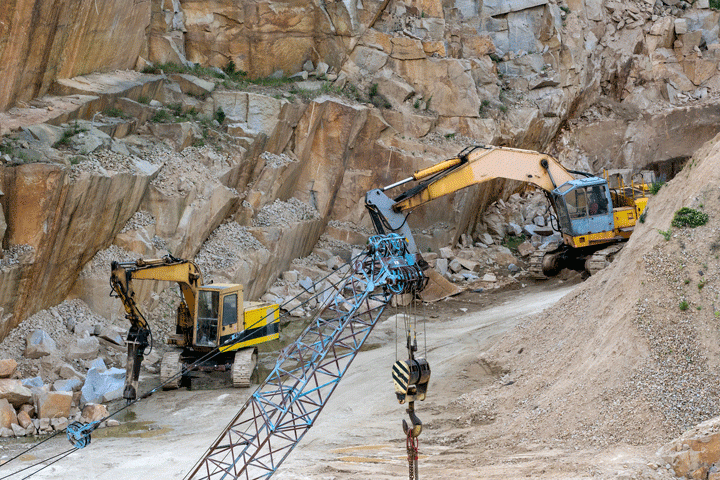A Trip Via Granite Quarries in South Africa: Introduction Nature's Virtuosity
A Trip Via Granite Quarries in South Africa: Introduction Nature's Virtuosity
Blog Article
Introducing the Mysteries of Granite Quarrying: Where Stamina and Sophistication Meet
The world of granite quarrying is a realm where the raw strength of nature merges with human virtuosity to develop frameworks that stand the test of time with an air of elegance. From the midsts of quarries to the thorough sprucing up in workshops, the process of transforming granite right into building wonders is a complicated dancing of practice and technology. As we peer into the midsts of this ancient craft, we begin to reveal the surprise ins and outs that form the extremely essence of our developed environment.
The Origins of Granite Quarrying
In the record of architectural history, the origins of granite quarrying are shrouded in a tapestry of old workmanship and geological wonders. Dating back to old Egypt and Mesopotamia, the extraction of granite from quarries noted the beginning of a trip that would eventually cause the creation of several of the globe's most famous structures.
Granite quarrying's roots can be mapped to the proficient artisans that acknowledged the rock's sturdiness and aesthetic charm. Via a combination of primitive devices and sheer resolution, these early quarry workers uncovered granite blocks that would come to be the building blocks of people.
As civilizations progressed, so did the strategies of quarrying granite. The Romans, renowned for their engineering expertise, created sophisticated approaches for extracting granite to build monoliths, holy places, and roads that stood the test of time.
The tradition of these old quarrying practices continues to form modern-day architecture, with granite staying a sign of toughness and elegance in building tasks around the world. (granite quarries in south africa)
Tools of the Quarrying Trade
The evolution of granite quarrying methods from old human beings to modern-day times highlights the crucial function played by the devices of the quarrying profession in forming the sector's techniques. In old times, quarrying devices were rudimentary, typically consisting of blades, hammers, and wedges made from products like bronze or iron. These tools required significant manpower and time to extract granite obstructs from quarries.

Furthermore, the introduction of pneumatically-driven devices and high-powered equipment has significantly decreased the physical labor needed in quarrying procedures, boosting worker security and productivity. As the quarrying industry continues to innovate, the tools of the profession continue to be at the center of driving progression and forming the future of granite extraction.
Extracting Blocks of Granite
Utilizing accuracy equipment and advanced strategies, the removal of granite obstructs from quarries has become a sophisticated procedure in the contemporary quarrying market. The initial action includes determining the area and dimension of the granite down payment to figure out the most efficient removal technique. Once an ideal site is selected, the removal process starts with the exploration of holes for the positioning of dynamites. Controlled blowing up methods are then utilized to break apart the granite right into workable sections.

Polishing and Ending Up Methods
To achieve a remarkable surface area on granite blocks, experienced craftsmens utilize a series of careful polishing and ending up techniques. After the first extraction and shaping procedures, the granite obstructs undertake a thorough polishing phase to enhance their all-natural beauty and durability. One typical technique utilized in brightening granite is diamond abrasion, where commercial rubies are made use of to grind and brighten the rock to a smooth finish. This procedure not just creates a lustrous surface area however likewise makes certain uniformity in shade and structure throughout the granite block.
In enhancement to polishing, completing techniques are put on more fine-tune the granite's appearance. These techniques might consist of flaming, developing, or brushing, each offering special structures and finishes to match different visual preferences. Flaming, for circumstances, involves revealing the granite surface area to high temperature levels to create a rough, distinctive coating, ideal for outdoor applications where slip-resistance is essential. Honing, on the various other hand, offers a click for info matte finish that is smooth to the touch, ideal for interior kitchen counters and floor covering. By visit the site meticulously selecting and using these polishing and finishing strategies, craftsmens can transform raw granite obstructs right into splendid pieces that display both stamina and beauty.

Ecological Influence and Sustainability
With the expanding focus on environmental awareness in the market, granite quarrying practices are increasingly scrutinized for their influence on all-natural sources and long-lasting sustainability. Quarrying for granite can have considerable environmental implications. The removal procedure typically includes using hefty equipment, dynamites, and large quantities of water, bring about habitat destruction, dirt disintegration, and water pollution. Additionally, the transport of granite from quarries to processing centers produces carbon emissions, further adding to environmental destruction. granite quarries in south africa.
To alleviate these impacts and make sure sustainability in granite quarrying, industry stakeholders are embracing various procedures. Implementing sophisticated modern technologies to decrease power usage and water use, recovering quarried land for eco-friendly restoration, and advertising liable sourcing practices are some methods being used. Additionally, qualifications such as the Woodland Stewardship Council (FSC) and the Leadership in Energy and Environmental Style (LEED) aid consumers determine eco-friendly granite products.
Conclusion
In conclusion, granite quarrying is a process that requires specialized devices and strategies to remove blocks of granite and brighten them to a high level check out this site of finish. While the environmental impact of quarrying can be substantial, initiatives are being made to enhance sustainability methods in the industry. Overall, granite quarrying is a fragile equilibrium in between utilizing the strength and elegance of this all-natural rock while reducing its effect on the environment.
Report this page